American Museum of Natural History Discount Tickets & Tips for Your Visit
Check out our helpful guide for visiting New York's American Museum of Natural History, packed full of ways to save on admission, tips for visiting, nearby attractions, and much more. Fans of the Night at the Museum series will recognize the massive façade of New York’s American Museum of Natural History, complete with the iconic sculpture of Teddy Roosevelt – although this one doesn't talk! There is a reason that this museum has been the setting for so many films and books; in addition to its architecture and Central Park adjacent location, it is filled with some of the world’s oldest and most spectacular wonders.
How to buy American Museum of Natural History discount tickets?
We’ve got you covered – American Museum of Natural History admission is available with the below money saving options, so you can choose the attraction pass that’s right for you: 1. Explorer Pass – Choose as you go. Includes admission of up to 10 attractions. 2. Build Your Own Pass – Select the attractions you want to visit prior to visiting. See all available passes, attractions & prices – Learn more. Please note: Your Pass entitles you to free general admission. If you would like to upgrade your admission ticket to include a temporary exhibit, IMAX or 3D film, OR a Hayden Planetarium Space Show, you may do so directly at the Museum.
Tips for Visiting the American Museum of Natural History
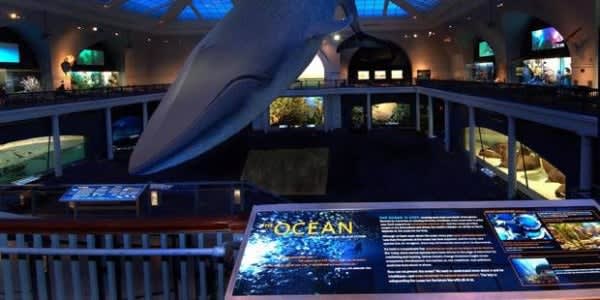 Make a plan: The Museum of Natural History is quite sizable, and it can be easy to wind through an exhibition hall and lose your track. Insider tip? The main entrance from Central Park West is actually the museum's second floor, so keep this in mind when planning your route. Relax under the whale: The Milstein Family Hall of Ocean Life is home to the museum's famous life-sized blue whale. While it is certainly a site to behold, the room also has a pleasant area to sit and take in some videos focused on ocean exploration, and allows plenty of room for kids to play around in! Look for interactive exhibits: While most museums keep their collections behind layers of security, there are some exhibits in the Museum of Natural History that encourage visitors to touch and engage with them. These can be particularly exciting for children! Keep in mind that not all items can be touched, so look for the signs! Take kids to the discovery room: For even more hands-on fun, children between 5 and 12 will love being able to explore science with specially designed interactive activities. Bring a flashlight: Okay, not really. But, it's important to note that some of the museum's exhibitions have purposely low light, so be prepared for different lighting levels. Download the free Explorer app: The free app includes museum maps and allows visitors to take self-guided tours, and provides plenty of additional information on exhibits. The museum does have free WiFi, so you can download the app on-site if you want. Consult the museum map before your visit: Be sure to look over the museum map before your visit to help you plan which exhibits you want to see, and which ones you might be able to save for next time if the kids get tired.
Make a plan: The Museum of Natural History is quite sizable, and it can be easy to wind through an exhibition hall and lose your track. Insider tip? The main entrance from Central Park West is actually the museum's second floor, so keep this in mind when planning your route. Relax under the whale: The Milstein Family Hall of Ocean Life is home to the museum's famous life-sized blue whale. While it is certainly a site to behold, the room also has a pleasant area to sit and take in some videos focused on ocean exploration, and allows plenty of room for kids to play around in! Look for interactive exhibits: While most museums keep their collections behind layers of security, there are some exhibits in the Museum of Natural History that encourage visitors to touch and engage with them. These can be particularly exciting for children! Keep in mind that not all items can be touched, so look for the signs! Take kids to the discovery room: For even more hands-on fun, children between 5 and 12 will love being able to explore science with specially designed interactive activities. Bring a flashlight: Okay, not really. But, it's important to note that some of the museum's exhibitions have purposely low light, so be prepared for different lighting levels. Download the free Explorer app: The free app includes museum maps and allows visitors to take self-guided tours, and provides plenty of additional information on exhibits. The museum does have free WiFi, so you can download the app on-site if you want. Consult the museum map before your visit: Be sure to look over the museum map before your visit to help you plan which exhibits you want to see, and which ones you might be able to save for next time if the kids get tired.
When is the best time to visit the American Museum of Natural History?
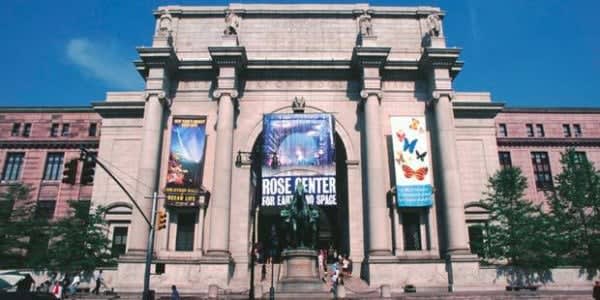 Try to visit the Museum of Natural History during the week to cut down on crowds, since weekends are always the busiest. Keep in mind that many schools do organize daily groups to the museum, so early afternoon is an ideal time since most school groups will have finished their visits for the day. In search of shorter lines? The Rose Center entrance usually attracts fewer crowds and could be a good option to save you some time.
Try to visit the Museum of Natural History during the week to cut down on crowds, since weekends are always the busiest. Keep in mind that many schools do organize daily groups to the museum, so early afternoon is an ideal time since most school groups will have finished their visits for the day. In search of shorter lines? The Rose Center entrance usually attracts fewer crowds and could be a good option to save you some time.
How much time do you need at the American Museum of Natural History?
There is so much to see and do inside the museum, you could spend the whole day there! Plan to take at least 2 hours and 30 minutes to tour the museum to make the most of your visit. However, if you are planning on viewing a show or special exhibition, plan to be there for up to 3 hours and 30 minutes.
What should I bring to the American Museum of Natural History?
- Camera: The museum encourages visitors to document their experience in photos, but keep in mind that selfie sticks aren’t allowed. You can use flash photography, although not in all areas.
- Bottle of Water: The museum doesn't allow outside food, but you can bring in a bottle of water. Well-placed water fountains make great places to top off your bottle.
- Nothing bigger than a purse: You will need to check any items larger than a purse at the Coat Check, and the museum won't allow you to check small luggage or oversized bags. Keep in mind that coat check does cost an additional $2, and the lines can get very long in the cold months. There is an extra coat check located in the Rose Center that is available during winter months (with much shorter lines!)
What to do at the American Museum of Natural History?
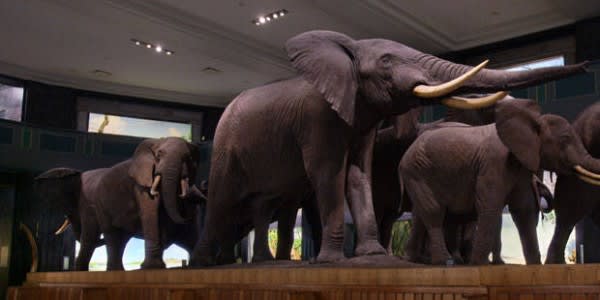 The Museum of Natural History often has special exhibitions that require additional entry fees, but the permanent exhibits are home to the museum’s most iconic features. Visitors will be able to experience how man and nature have interacted over the years, and how the planet has changed and evolved. Here is a quick look at some of the permanent exhibitions!
The Museum of Natural History often has special exhibitions that require additional entry fees, but the permanent exhibits are home to the museum’s most iconic features. Visitors will be able to experience how man and nature have interacted over the years, and how the planet has changed and evolved. Here is a quick look at some of the permanent exhibitions!
Hall of Biodiversity and Environmental Halls
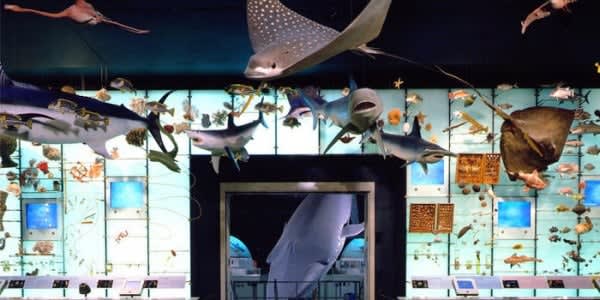 Image Credit: American Museum of Natural History
Image Credit: American Museum of Natural HistoryBirds and Reptiles and Amphibians Halls
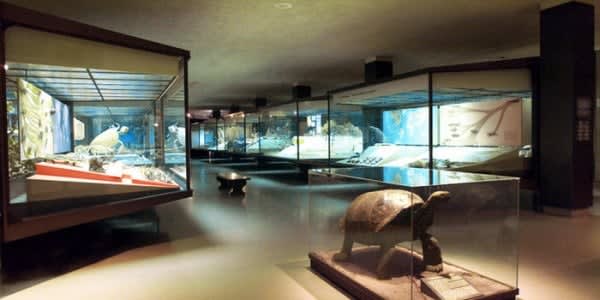 Image Credit: American Museum of Natural History
Image Credit: American Museum of Natural HistoryMammal Halls
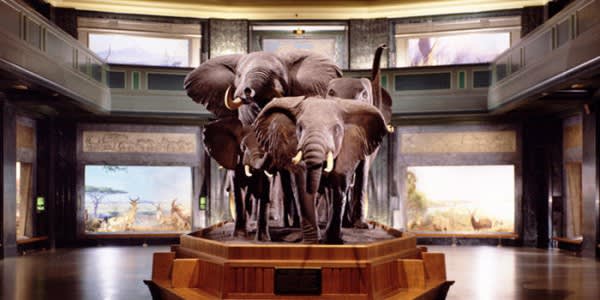 Image Credit: American Museum of Natural History
Image Credit: American Museum of Natural HistoryEarth and Planetary Sciences Halls
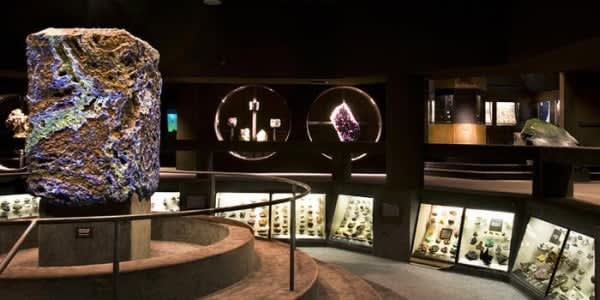 These areas of the museum are fascinating for people of all ages, as they contain examples of rare gemstones and objects related to minerals and geology. The Arthur Ross Hall of Meteorites contains the massive Ahnighito, a 34-ton piece of meteorite which is estimated to be 4.5 billion years old. In the Gottesman Hall of Planet Earth visitors will be able to see examples of how minerals and rock formations occur to make our natural landscape.
These areas of the museum are fascinating for people of all ages, as they contain examples of rare gemstones and objects related to minerals and geology. The Arthur Ross Hall of Meteorites contains the massive Ahnighito, a 34-ton piece of meteorite which is estimated to be 4.5 billion years old. In the Gottesman Hall of Planet Earth visitors will be able to see examples of how minerals and rock formations occur to make our natural landscape.
Fossil Halls
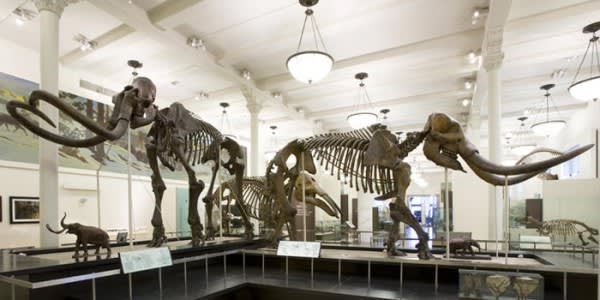 The top floor fossil halls are definitely one of the museum’s highlights. Want to meet a T-Rex? The Hall of Saurischian Dinosaurs contains one of these terrifying creatures, in addition to examples of velociraptors and Allosaurus.* There's even an excitingly massive Titanosaur! Enormous extinct mammoths are found in the Paul and Irma Milstein Hall of Advanced Mammals, and massive sharks and sea creatures, straight out of a horror movie, are in the Hall of Vertebrate Origins. *Please note that as of Winter 2018, the Hall of Saurischian Dinosaurs is currently undergoing restoration work and will reopen upon completion. Please consult the attraction website directly to confirm the status of this section during your visit.
The top floor fossil halls are definitely one of the museum’s highlights. Want to meet a T-Rex? The Hall of Saurischian Dinosaurs contains one of these terrifying creatures, in addition to examples of velociraptors and Allosaurus.* There's even an excitingly massive Titanosaur! Enormous extinct mammoths are found in the Paul and Irma Milstein Hall of Advanced Mammals, and massive sharks and sea creatures, straight out of a horror movie, are in the Hall of Vertebrate Origins. *Please note that as of Winter 2018, the Hall of Saurischian Dinosaurs is currently undergoing restoration work and will reopen upon completion. Please consult the attraction website directly to confirm the status of this section during your visit.
Human Origins and Cultural Halls
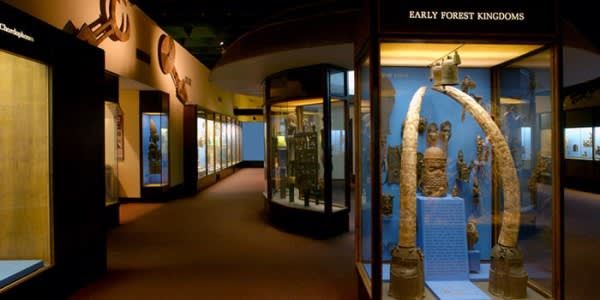 Image Credit: American Museum of Natural History
Image Credit: American Museum of Natural HistoryRose Center for Earth and Space
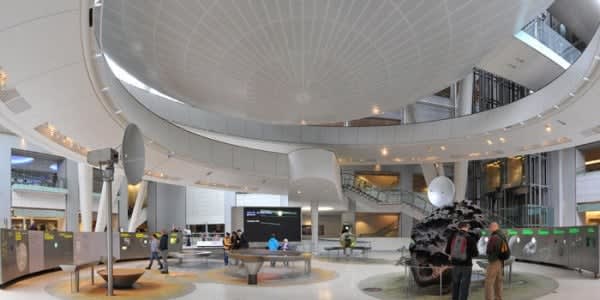 The museum is also dedicated to exploring the cosmos and the Rose Center is home to exhibits exploring the history of the universe. The world-famous Hayden Planetarium is located here, but you can still learn plenty if you decide not to buy the additional ticket for a show.
The museum is also dedicated to exploring the cosmos and the Rose Center is home to exhibits exploring the history of the universe. The world-famous Hayden Planetarium is located here, but you can still learn plenty if you decide not to buy the additional ticket for a show.
Which attractions are near the American Museum of Natural History?
There are plenty of other great attractions located nearby. Here are a few we suggest adding to your itinerary...
- The Metropolitan Museum of Art is a beautiful walk (or cab ride) through Central Park and explores the cultural history of the world in great depth.
- The Guggenheim Museum, which focuses on more contemporary art forms, is also a pleasant ride through Central Park. The Frank Lloyd Wright-designed building is one of New York's most iconic structures.
- The New York Historic Society is a few blocks away and focuses on significant events in the history of New York, many of which are tied into important events in American history.
Where to eat near the American Museum of Natural History? What restaurants are near the American Museum of Natural History?
- Museum Food Court - Inside the museum visitors can stop at the lower level food court for a vast selection of dishes appropriate for palates of all ages.
- Café on One & Four - There is also a small café with light bites on the first floor and another on the fourth floor.
- Starlight Café - Located on the first floor, adjecent to the Hayden Planetarium.
That being said, there are plenty of options for dining around the Upper West Side location.
- Shake Shack (366 Columbus Avenue) - No longer do you need to stand in long lines to enjoy the burgers and fries at Shake Shack, one of New Yorkers’ favorite places to grab a quick bite.
- Jacques Torres (285 Amsterdam Avenue) - Visiting in the middle of winter? You can't miss a Jacques Torres hot chocolate. While the menu focuses around chocolate, this makes a great place to reward the family after a long museum visit!
How to get to the American Museum of Natural History?
Hours
- Daily, 10:00 am-5:45 pm
- Closed Thanksgiving Day and Christmas Day. All holiday hours are subject to change without notice.
Directions & Address
Central Park West at 79th St. New York, NY 10024 The main entrance to the Rose Center for Earth and Space is located at 81st Street between Central Park West and Columbus Avenue. Public Transportation: By Subway: B (weekdays only) or C trains to 81st Street station; 1 train to 79th Street station at Broadway. Walk two blocks east to the Museum. By Bus: M79 to 81st Street
Is there parking at the American Museum of Natural History?
There is a parking garage at the American Museum of Natural History. You can find it at 81st Street between Central Park West and Columbus Avenue. It is open from 8 am–11 pm and costs up to$26 for 1 hour, $29 for 2 hours, $36 for 3-5 hours, $46 for 5-10 hours and $51 for max to close.
Save on Tickets with a New York City Explorer Pass
Remember, the New York City Explorer Pass® is the best choice for savings and flexibility, which includes American Museum of Natural History tickets, plus admission to your choice of other top attractions. Save up to 50% on top museums, tours, and activities vs. paying at the gate. Visit multiple New York City attractions for one low price.